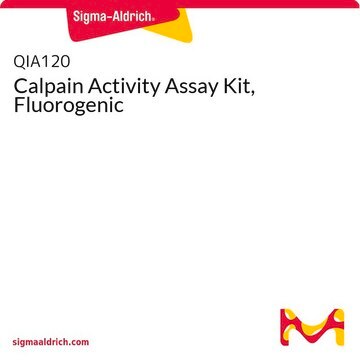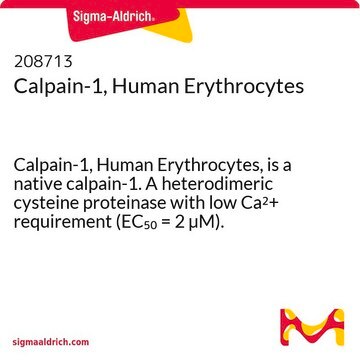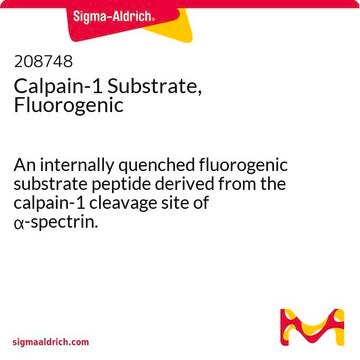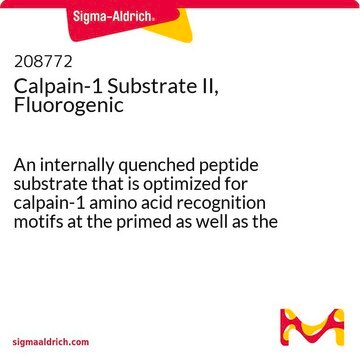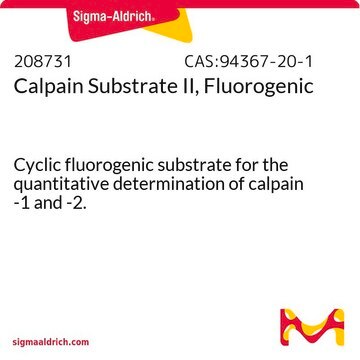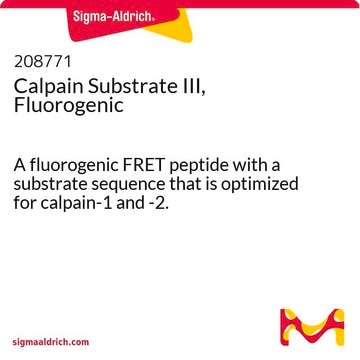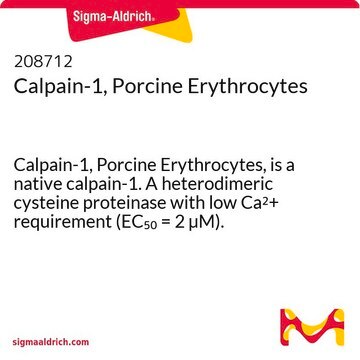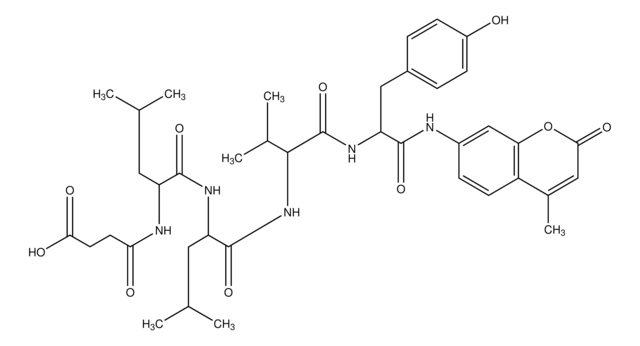Recommended Products
usage
sufficient for 96 tests
Quality Level
packaging
pkg of 1 96-well plate(s)
manufacturer/tradename
Calbiochem®
storage condition
OK to freeze
assay range
standard curve range: 63-1000 ng/mL
(as measured with purified human calpain 1)
input
sample type tissue extract(s)
sample type cell lysate
detection method
fluorometric
shipped in
wet ice
General description
• Sensitive: detects calpain activity at 63-1000 ng/ml
• Specific: Substrate and inhibitor optimized for specific detection of calpain activity
• Versatile: Homogeneous 96-well format can be used with biological samples or for inhibitor screens
• Convenient: Contains all reagents to assay samples in 30 min
Components
Warning
Principle
Preparation Note
Storage and Stability
Refrigerate (4°C): Assay Buffer, Activation Buffer, Substrate, Inhibitor, and 96-well plate
Freezer (-20°C): Reducing Agent
Freezer (-70°C): Control, Human Calpain 1
Note: Following initial use the Control, Human Calpain 1 should be dispensed into aliquots and stored at -70°C. Avoid freeze/thaw cycles.
Analysis Note
Calpain 1
Other Notes
Tompa, P., et al. 2004. J. Biol. Chem.279, 20775;
Veeranna, et al. 2004. Am. J. Pathol.165, 795;
Dainese, E., et al. 2002. J. Biol. Chem.277, 40296;
Wang, K.K., et al. 2000. Trends Neurosci.23, 20;
Black, R.A., et al. 1997. Nature385, 729;
Molinari, M. and Carafoli, E. 1997. J. Membr. Biol.156, 1;
Sorimachi, H., et al. 1997. Biochem. J.328, 721.
Legal Information
signalword
Danger
hcodes
Hazard Classifications
Repr. 1B
Storage Class
6.1C - Combustible, acute toxic Cat.3 / toxic compounds or compounds which causing chronic effects
wgk_germany
WGK 3
Certificates of Analysis (COA)
Search for Certificates of Analysis (COA) by entering the products Lot/Batch Number. Lot and Batch Numbers can be found on a product’s label following the words ‘Lot’ or ‘Batch’.
Already Own This Product?
Find documentation for the products that you have recently purchased in the Document Library.
Our team of scientists has experience in all areas of research including Life Science, Material Science, Chemical Synthesis, Chromatography, Analytical and many others.
Contact Technical Service